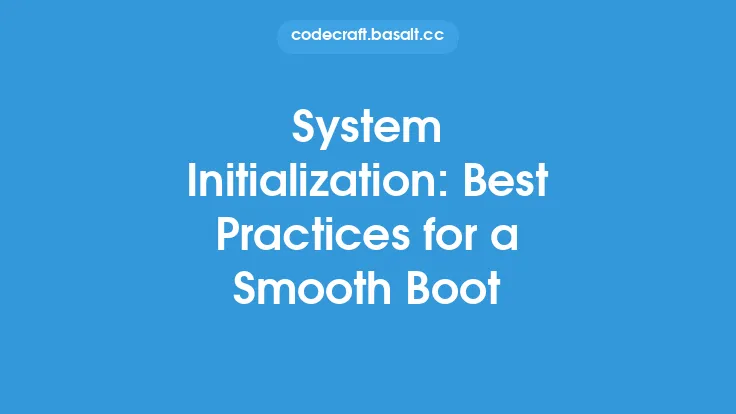Effective process management is crucial for achieving efficient system performance in operating systems. It involves a set of techniques and strategies that ensure the optimal utilization of system resources, such as CPU, memory, and I/O devices. By implementing best practices in process management, system administrators and developers can improve the overall performance, reliability, and scalability of their systems. In this article, we will delve into the key aspects of process management and explore the best practices for efficient system performance.
Introduction to Process Management
Process management refers to the set of activities and techniques used to manage the execution of processes in an operating system. It involves creating, scheduling, and terminating processes, as well as managing their interactions and resource allocation. The primary goal of process management is to ensure that the system resources are utilized efficiently and effectively, while also providing a responsive and reliable user experience. To achieve this goal, operating systems use various process management techniques, such as process scheduling, synchronization, and communication.
Process Creation and Resource Allocation
Process creation is the process of creating a new process in the system. It involves allocating the necessary resources, such as memory, CPU, and I/O devices, to the new process. The operating system uses various algorithms and techniques to manage resource allocation, such as first-come-first-served (FCFS), shortest job first (SJF), and priority scheduling. Effective resource allocation is critical to ensure that the system resources are utilized efficiently and that the processes are executed in a timely manner. System administrators and developers can use various tools and techniques, such as resource monitoring and profiling, to optimize resource allocation and improve system performance.
Process Synchronization and Communication
Process synchronization and communication are critical aspects of process management. Synchronization refers to the coordination of processes to ensure that they access shared resources in a mutually exclusive manner. Communication, on the other hand, refers to the exchange of data between processes. The operating system provides various synchronization primitives, such as locks, semaphores, and monitors, to manage process synchronization. Similarly, it provides various communication mechanisms, such as pipes, sockets, and shared memory, to enable process communication. Effective synchronization and communication are essential to ensure that the processes interact correctly and efficiently, while also preventing errors and inconsistencies.
Process Monitoring and Control
Process monitoring and control are essential aspects of process management. They involve tracking the execution of processes, detecting errors and anomalies, and taking corrective actions to ensure that the system operates efficiently and reliably. The operating system provides various tools and techniques, such as process monitoring utilities, system logs, and error handling mechanisms, to support process monitoring and control. System administrators and developers can use these tools to detect and diagnose problems, optimize system performance, and improve the overall reliability and availability of the system.
Best Practices for Efficient System Performance
To achieve efficient system performance, system administrators and developers can follow various best practices in process management. These include:
- Optimizing resource allocation to ensure that the system resources are utilized efficiently
- Implementing effective synchronization and communication mechanisms to prevent errors and inconsistencies
- Monitoring and controlling processes to detect and diagnose problems
- Using profiling and performance analysis tools to optimize system performance
- Implementing error handling and recovery mechanisms to ensure that the system operates reliably and efficiently
- Using load balancing and scaling techniques to ensure that the system can handle varying workloads and user demands
- Implementing security mechanisms to prevent unauthorized access and malicious activities
Conclusion
In conclusion, effective process management is critical to achieving efficient system performance in operating systems. By implementing best practices in process management, system administrators and developers can improve the overall performance, reliability, and scalability of their systems. This includes optimizing resource allocation, implementing effective synchronization and communication mechanisms, monitoring and controlling processes, and using various tools and techniques to optimize system performance. By following these best practices, system administrators and developers can ensure that their systems operate efficiently, reliably, and securely, while also providing a responsive and reliable user experience.





